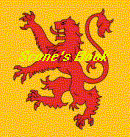


 |


 |


 |
>Visiting
The Liberty Bell pavilion is located on Market Street between 5th and 6th Streets. The building is open year round, though hours vary by season. Talks about the Liberty Bell are presented continuously. Audio tapes can be played on request in 16 foreign languages. After hours the Bell may be seen through a glass viewing window, where visitors may play a tape explaining the bell's story.
The Bell's Message
>The Liberty Bell's inscription conveys a message of liberty which goes beyond the words themselves. Since the bell was made, the words of the inscription have meant different things to different people.
When William Penn created Pennsylvania's government he allowed citizens to take part in making laws and gave them the right to choose the religion they wanted. The colonists were proud of the freedom that Penn gave them. In 1751, the Speaker of the Pennsylvania Assembly ordered a new bell for the State House. He asked that a Bible verse to be placed on the bell - "Proclaim LIBERTY throughout all the Land unto all the inhabitants thereof" (Leviticus 25:10). As the official bell of the Pennsylvania State House (today called Independence Hall) it rang many times for public announcements, but we remember times like July 8, 1776 when it rang to announce the first public reading of the Declaration of Independence.
The old State House bell was first called the "Liberty Bell" by a group trying to outlaw slavery. These abolitionists remembered the words on the bell and, in the 1830s, adopted it as a symbol of their cause.
Beginning in the late 1800s, the Liberty Bell travelled around the country to expositions and fairs to help heal the divisions of the Civil War. It reminded Americans of their earlier days when they fought and worked together for independence.
In 1915, the bell made its last trip and came home to Philadelphia, where it now silently reminds us of the power of liberty. For more than 200 years people from around the world have felt the bell's message. No one can see liberty, but people have used the Liberty Bell to represent this important idea.
A bell for the Pennsylvania State House was cast in London, England, however, it cracked soon after it arrived in Philadelphia. Local craftsmen John Pass and John Stow cast a new bell in 1753, using metal from the English bell. Their names appear on the front of the bell, along with the city and the date.
By 1846 a thin crack began to affect the sound of the bell. The bell was repaired in 1846 and rang for a George Washington birthday celebration, but the bell cracked again and has not been rung since. No one knows why the bell cracked either time.
The bell weighs about 2000 pounds. It is made of 70% copper, 25% tin, and small amounts of lead, zinc, arsenic, gold, and silver. It hangs from what is believed to be its original yoke, made from American elm, also known as slippery elm.
And, oh, yes.....one other thing I would like to mention.....we never give the French enough credit for helping us free ourselves from England. No matter what their motive, both England and France had a vested interest in the colonies. Both had large land holdings in Canada, and at a time we really needed help, the French stepped in and helped us. They helped in the freedom fight, and helped us win our FREEDOM! Within a few years, they started their own Revolution, and became free, themselves. Thank you France, for helping the Colonists!
Presented for your pleasure,
and hopefully, edification.....Scone
www.sconemac2.com
 |
 © © |
©Page designed by Created by Dreamspinner©, Webmaster
"©All Rights Reserved for ©Scone's Scottish & Celtic Internet Book 10/15/1997 N MacCorkill©"
"©All Rights Reserved Page construction and design,
5/9/98 thru 2003 inclusive .
Scone ©Dreamspinner"©